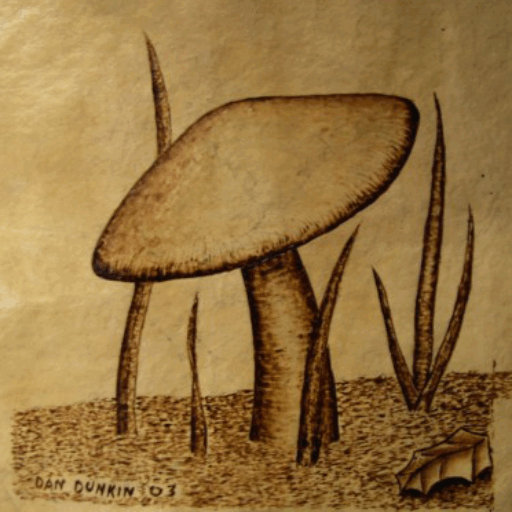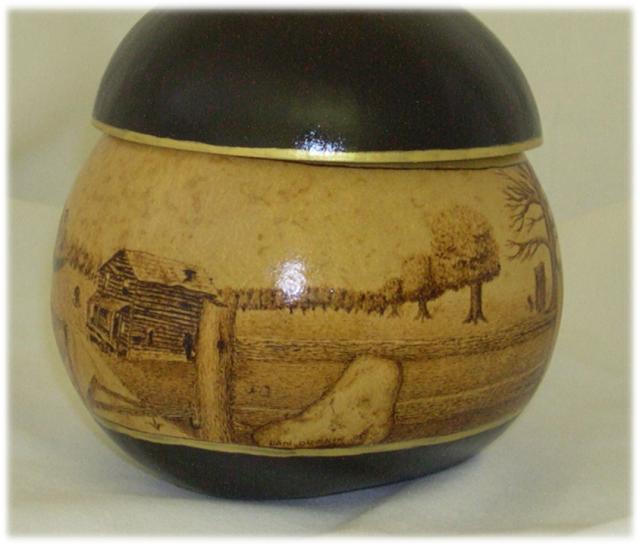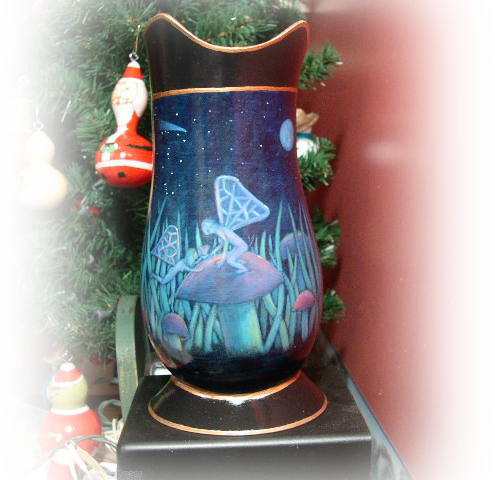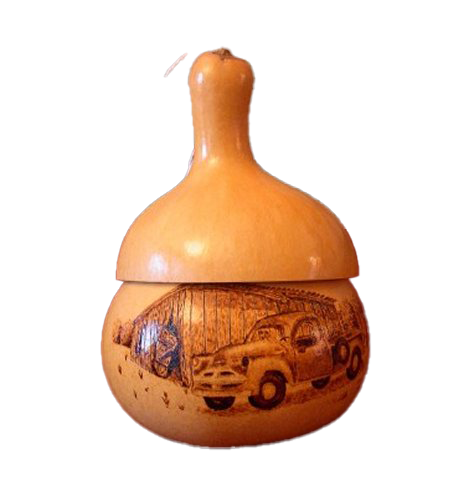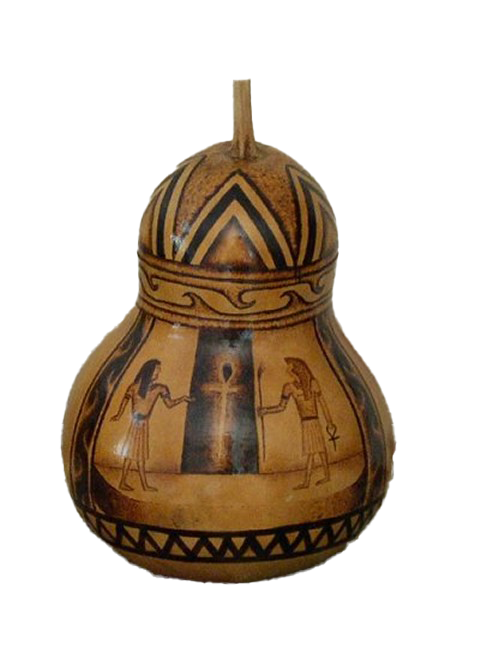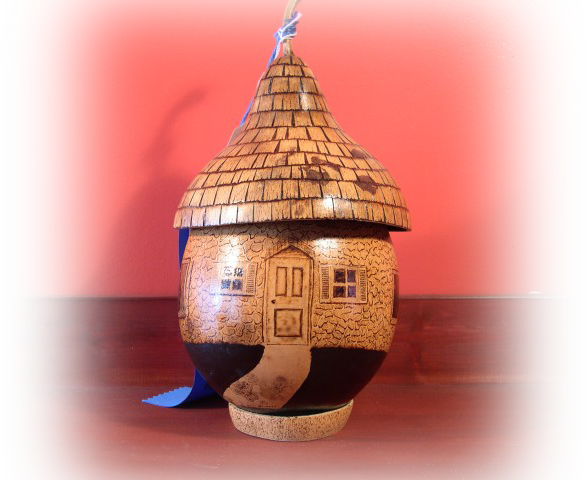Discover the Rich History and Versatile Uses of Gourds
The Origins and Significance of Lagenaria and Cucurbita Gourds
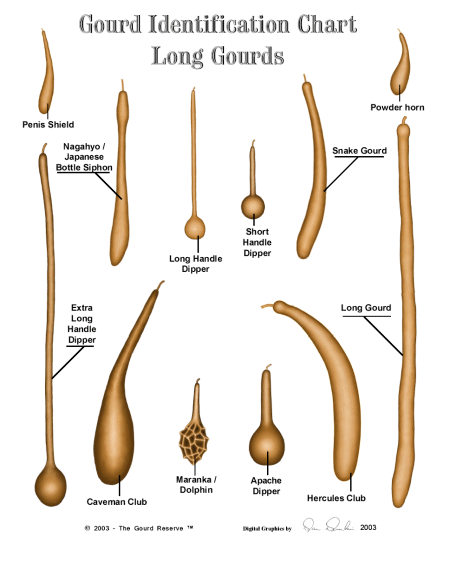
Gourd History
The Gourd Reserve
The Gourd has been used by man as far back as we can tell, since the very beginning. A gourd grew over Jonah to shade him from the heat as God used this vegetable to teach Jonah a lesson about forgiveness. Pottery and utensils dating back to prehistory may well have been fashioned and made after the shape and uses of gourds.
- The Purple Martin and the Gourd
The Purple Martin is one bird who’s mere existance is today nearly totally dependant on man to supply a nesting place for them, and they most commonly accept a large gourd which has been named after the bird, the Purple Martin Gourd. This gourd is so preferred by Purple Martins that companies now manufacture plastic Purple Martin bird houses molded in the shape of this gourd. How could these birds have come to this dependency?
- Native American Uses
Submitted by Scott Nelson, this page lists some of the uses of Gourds by different Native American Tribes.
- Native Water Wings
some history on gourds and their uses through the century. These gourds were used as water wings, or a safety floatation device.
- Gourd Whistle / Ocarina
Native American and Hawaiians alike made musical instruments out of gourds including the gourd whistle, gourd flute and gourd ocarina.
- Gourd Utensils
long before we had plastics and molding machins, we had gourds, and many gourd utensils were made to make life easier in a very similar way to that of modern day materials make utensils.
Native Americans and their use of gourds
Contributed by Scott Nelson
Here’s an interesting list of what different Tribes
used gourd for….
Almost as simple as walking into the
local drug/music/hardware store.
Bottle Gourd;
Cherokee Drug (Dermatological Aid)
Poultice of soaked seeds used for boils.
Indians of Louisiana
Poultice of crushed leaves applied to the forehead for
headaches.
Seminole. (Analgesic)
Seeds used for adult’s sickness caused by adultery:
headache, body pains and crossed fingers.
(Psychological Aid)
Seeds burned to smoke the body for insanity.
Ojibwa Food (Vegetable)
Gourds eaten young, before the rind had hardened.
Acoma and Laguna Indians
(Cooking Tools)
Gourds made into dippers.
(Toys & Games)
Gourds made into rattles.
Cherokee (Ceremonial Items)
Fruit used to make ceremonial rattles.
Cherokee Other (Cooking Tools)
Fruit used to make dippers.
Cocopa (Musical Instrument)
Fruit made into a rattle and used to provide rhythm
for singing and dancing.
Havasupai (Ceremonial Items)
Gourds made into rattles and used for ritualistic
music.
Other (Containers)
Rinds made into containers used for carrying water on
foot or on horseback trips away from home.
Hopi
Used as prayer sticks.
Covered with a cord net to be used as water containers
in ceremonies and buried with the dead.
Used as containers for sacred honey, cups, seed
bottles and medicine holders.
(Cooking Tools)
Used as dippers, canteens and spoons.
Contributed by Scott Nelson
Gourds in Crafts and Daily Life
From Utility to Art: The Multifaceted Uses of Gourds
Gourds have transcended their humble origins to become indispensable in both crafts and daily life. In households, they serve as natural containers, utensils, and even decorative items. Artisans around the world carve, paint, and embellish gourds to create stunning works of art, ranging from intricate sculptures to functional bowls and vases. The Creek Indians were particularly adept at transforming gourds into practical tools and ceremonial items, showcasing their ingenuity and resourcefulness. Today, gourd crafting is a beloved hobby that brings together communities, fostering creativity and preserving cultural traditions. Whether used for practical purposes or artistic expression, gourds continue to enrich our lives in countless ways.
Gourds in Creative Expression
Historical Timeline of Gourd Cultivation
Gourds have been cultivated and utilized by various cultures for thousands of years. This timeline highlights key moments in the history of gourd use and cultivation.
2000 BCE
Early Domestication
Gourds were among the first plants to be domesticated by humans, used for containers, utensils, and musical instruments.

1500 CE
Gourds in Native American Culture
Native American tribes, including the Creek Indians, used gourds for practical purposes and ceremonial objects, showcasing their versatility.

1990
Founding of The Gourd Reserve
Timothy Mark Moyers and Carmella founded The Gourd Reserve, creating a hub for gourd enthusiasts and collectors.

2005
Expansion and Innovation
Carmella, along with her new husband Dan, expanded the Reserve’s collection and conducted innovative cross-breeding experiments on their Indiana farm.


Dive Deeper into Gourd Crafting
Discover the rich history and versatile uses of Lagenaria and Cucurbita gourds. From ancient Creek Indian traditions to modern-day crafts, gourds have been an integral part of human creativity and daily life. Join our community to learn more about gourd cultivation, innovative crafting techniques, and how you can get involved.
